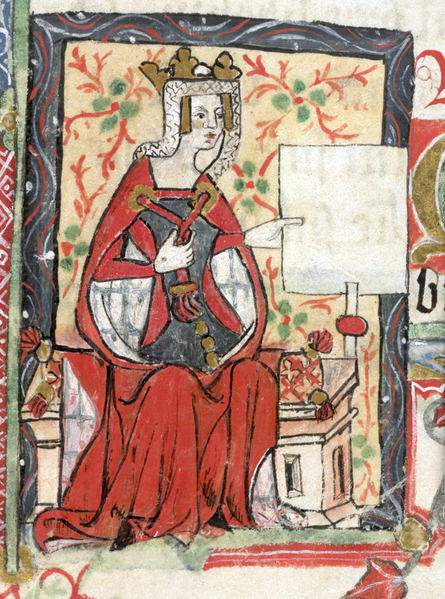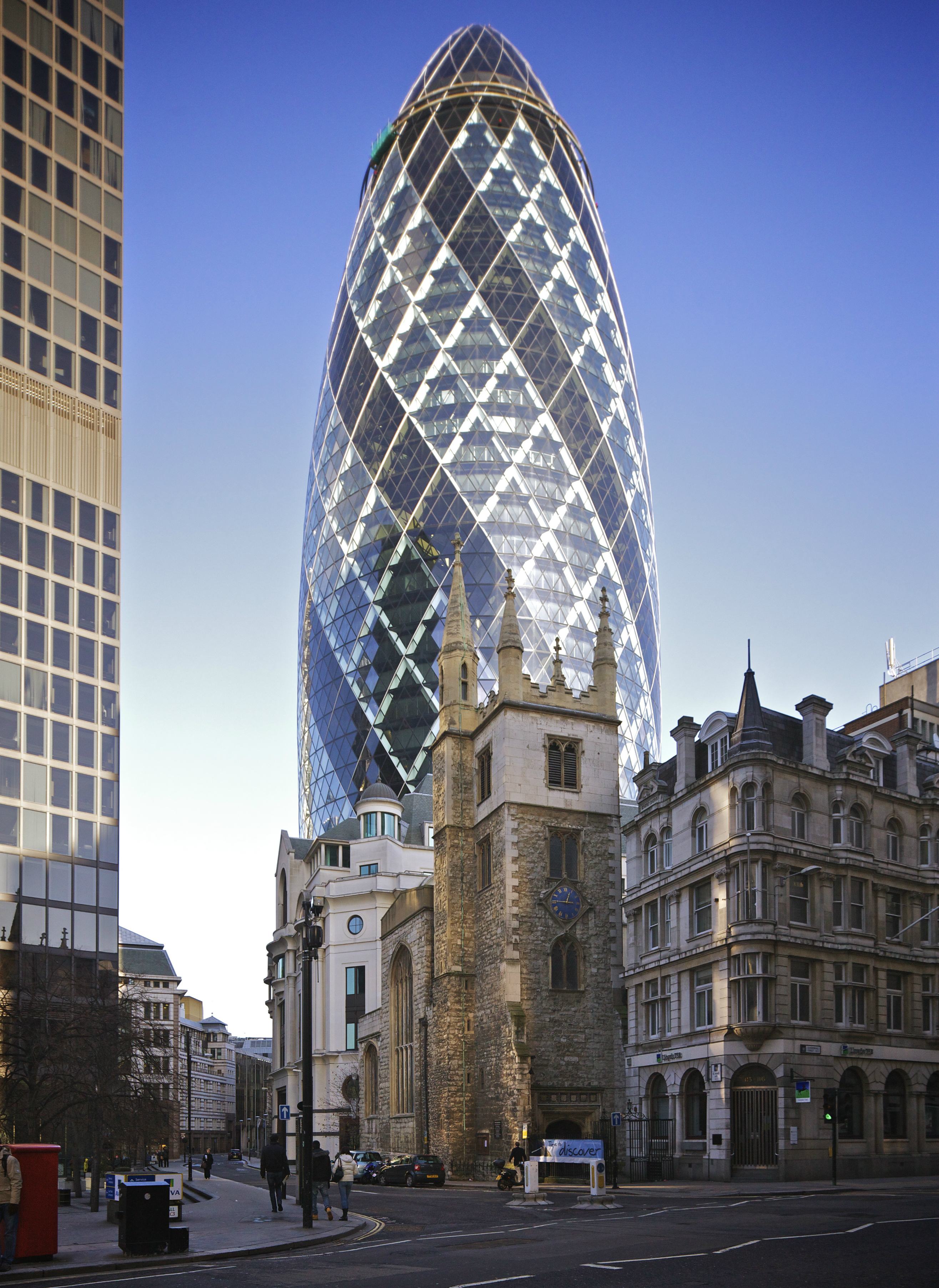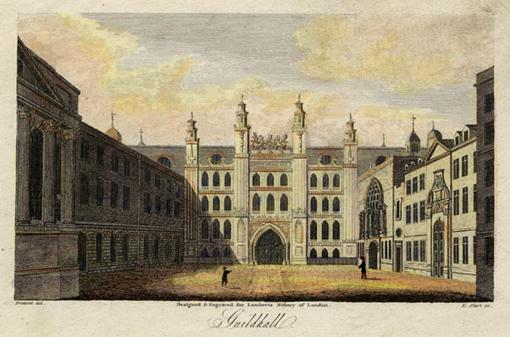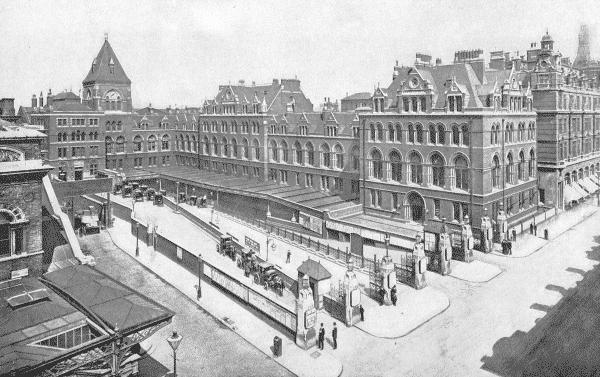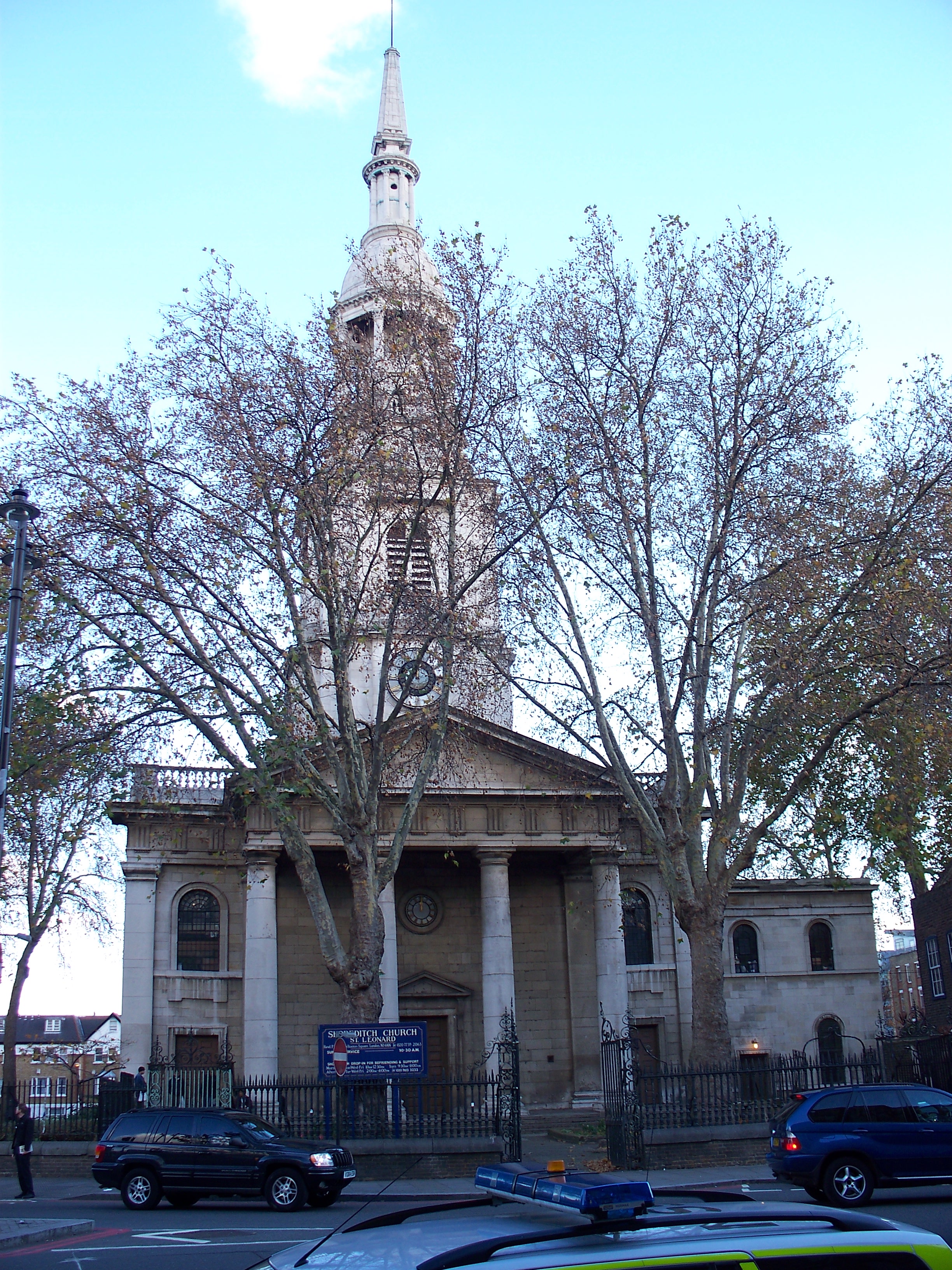|
EC Postcode Area
The EC (Eastern Central) postcode area, also known as the London EC postal area, is a group of postcode districts in central London, England. It includes almost all of the City of London and parts of the London boroughs of Islington, Camden, Hackney, Tower Hamlets and Westminster. The area covered is of very high density development. Deliveries for the EC postcode area are made from Mount Pleasant Mail Centre. Postal administration The current postcode districts are relatively recent divisions of EC1, EC2, EC3 and EC4, which were established in 1917. When the districts are used for purposes other than the sorting of mail, such as a geographic, spoken reference and on street signs, they continue to be commonly grouped into those four 'districts'. List of postcode districts ! EC1A , LONDON , St Bartholomew's Hospital , City of London, Islington , - ! EC1M , LONDON , Clerkenwell, Farringdon , Islington, Camden, City of London , - ! EC1N , LONDON , Hatton Garde ... [...More Info...] [...Related Items...] OR: [Wikipedia] [Google] [Baidu] [Amazon] |
London
London is the Capital city, capital and List of urban areas in the United Kingdom, largest city of both England and the United Kingdom, with a population of in . London metropolitan area, Its wider metropolitan area is the largest in Western Europe, with a population of 14.9 million. London stands on the River Thames in southeast England, at the head of a tidal estuary down to the North Sea, and has been a major settlement for nearly 2,000 years. Its ancient core and financial centre, the City of London, was founded by the Roman Empire, Romans as Londinium and has retained its medieval boundaries. The City of Westminster, to the west of the City of London, has been the centuries-long host of Government of the United Kingdom, the national government and Parliament of the United Kingdom, parliament. London grew rapidly 19th-century London, in the 19th century, becoming the world's List of largest cities throughout history, largest city at the time. Since the 19th cen ... [...More Info...] [...Related Items...] OR: [Wikipedia] [Google] [Baidu] [Amazon] |
Finsbury
Finsbury is a district of Central London, forming the southeastern part of the London Borough of Islington. It borders the City of London. The Manorialism, Manor of Finsbury is first recorded as ''Vinisbir'' (1231) and means "manor of a man called Finn".Mills, D. (2000). ''Oxford Dictionary of London Place Names''. . Finsbury lay just outside Cripplegate (and on its later construction, Moorgate) in London Wall. At that time, much of the manor was part of the ''"great fen which washed against the London Wall, northern wall of the City of London, City"''. Finsbury gave its name to two larger administrative areas: the Finsbury division, Finsbury Division of the Ossulstone (hundred), Ossulstone Hundred of Middlesex, from the 17th century until 1900, and from 1900 to 1965 the Metropolitan Borough of Finsbury. The Metropolitan Borough included Finsbury (also known as St Luke's, London, St Luke's) and Clerkenwell. The area should not be confused with Finsbury Park, a public space r ... [...More Info...] [...Related Items...] OR: [Wikipedia] [Google] [Baidu] [Amazon] |
St Mary Axe
St Mary Axe was a medieval parish in the City of London whose name survives as that of the street which formerly occupied it. The Church of St Mary Axe was demolished in 1561 and its parish united with that of St Andrew Undershaft, which is situated on the corner of St Mary Axe and Leadenhall Street. The site of the former church is now occupied by Fitzwilliam House, a fact acknowledged by a blue plaque on the building's façade. Nearby parishes include the medieval Great St Helen's (1210) and St Ethelburga (14th century). The street name may derive from a combination of the church dedicated to the Virgin Mary and a neighbouring tavern which prominently displayed a sign with an image of an axe, or simply from the church name itself, which may have come from the axes used by the Worshipful Company of Skinners, who were patrons. The sign of an axe is reported to have been present over the east end of the church. The street St Mary Axe is now most notable for the Baltic Exchan ... [...More Info...] [...Related Items...] OR: [Wikipedia] [Google] [Baidu] [Amazon] |
Barbican Estate
The Barbican Estate, or Barbican, is a residential complex of around 2,000 flats, Apartment#Maisonette, maisonettes and houses in central London, England, within the City of London. It is in an area once devastated by World War II bombings and densely populated by financial institutions, 1.4 miles (2.2 km) north east of Charing Cross. Originally built as rental housing for middle- and upper-middle-class professionals, it remains an upmarket residential estate. It contains, or is adjacent to, the Barbican Arts Centre, the Museum of London, the Guildhall School of Music and Drama, the Barbican public library, the City of London School for Girls and a YMCA (now closed), forming the ''Barbican Complex''. The Barbican Complex is a prominent example of British brutalist architecture and is listed building, Grade II listed as a whole, with the exception of the former Milton Court, which once contained a fire station, medical facilities and some flats but was demolished to allow ... [...More Info...] [...Related Items...] OR: [Wikipedia] [Google] [Baidu] [Amazon] |
Guildhall, London
Guildhall is a municipal building in the City of London, England. It is off Gresham and Basinghall streets, in the wards of Bassishaw and Cheap. The current building dates from the 15th century; however documentary evidence suggests that a guildhall had existed at the site since at least the early 12th century. The building has been used as a town hall for several hundred years, and is still the ceremonial and administrative centre of the City of London and its Corporation. It should not be confused with London's City Hall, the administrative centre for Greater London in Canning Town. The term "Guildhall" refers both to the whole building and to its main room, which is a medieval great hall. It is a Grade I-listed building. History Roman, Anglo-Saxon and Medieval During the Roman period, the Guildhall was the site of the London Roman Amphitheatre, rediscovered as recently as 1988. It was the largest in Roman Britain, partial remains of which are on public display in t ... [...More Info...] [...Related Items...] OR: [Wikipedia] [Google] [Baidu] [Amazon] |
Bank Of England
The Bank of England is the central bank of the United Kingdom and the model on which most modern central banks have been based. Established in 1694 to act as the Kingdom of England, English Government's banker and debt manager, and still one of the bankers for the government of the United Kingdom, it is the world's second oldest central bank. The bank was privately owned by stockholders from its foundation in 1694 until it was nationalised in 1946 by the Attlee ministry. In 1998 it became an independent public organisation, wholly owned by the Treasury Solicitor on behalf of the government, with a mandate to support the economic policies of the government of the day, but independence in maintaining price stability. In the 21st century the bank took on increased responsibility for maintaining and monitoring financial stability in the UK, and it increasingly functions as a statutory Financial regulation, regulator. The bank's headquarters have been in London's main financial di ... [...More Info...] [...Related Items...] OR: [Wikipedia] [Google] [Baidu] [Amazon] |
Tower 42
Tower 42, commonly known as the NatWest Tower, is a skyscraper in the City of London. Designed by Richard Seifert and engineered by Pell Frischmann, it opened in 1980 as London's first skyscraper and the tallest building in the United Kingdom at the time. A prominent landmark that dominated the London skyline through the 1980s, 1990s and 2000s, it is now the sixth-tallest skyscraper in the City of London and the 20th- tallest in London overall. Its original name was the National Westminster Tower, having been built as NatWest's international headquarters. Seen from above, the shape of the tower resembles that of the NatWest logo (three chevrons in a hexagonal arrangement). The tower was first occupied in 1980 and formally opened on 11 June 1981 by Queen Elizabeth II. Located at 25 Old Broad Street in the ward of Cornhill, it was constructed by John Mowlem & Co from 1971 and completed in 1980. It was London's first skyscraper, at high. It was superseded as the tallest ... [...More Info...] [...Related Items...] OR: [Wikipedia] [Google] [Baidu] [Amazon] |
Liverpool Street Station
Liverpool Street station, also known as London Liverpool Street, is a major central London railway terminus and connected London Underground station in the north-eastern corner of the City of London, in the ward of Bishopsgate Without. It is the terminus of the West Anglia Main Line to Cambridge and Ely; the Great Eastern Main Line to Norwich; commuter trains serving east London and destinations in the East of England, including the Weaver line of the London Overground; and the Stansted Express service to Stansted Airport. The station opened in 1874, as a replacement for Bishopsgate station as the Great Eastern Railway's main London terminus. By 1895, it had the most platforms of any London terminal station. During the First World War, an air raid on the station killed 16 on site, and 146 others in nearby areas. In the build-up to the Second World War, the station served as the entry point for thousands of child refugees arriving in London as part of the '' Kindertran ... [...More Info...] [...Related Items...] OR: [Wikipedia] [Google] [Baidu] [Amazon] |
Broadgate
Broadgate is a large, office and retail estate in the Bishopsgate area of the City of London. It is owned by British Land and GIC (Singaporean sovereign wealth fund), GIC and managed by British Land. History The original developer was a joint venture of Rosehaugh and Stanhope plc: it was built by a Bovis Construction, Bovis / Tarmac Group, Tarmac Construction joint venture and was the largest office development in London until the arrival of Canary Wharf in the early 1990s. The original scheme was designed by Arup Group, Arup Associates, Team 2, which was headed by Peter Foggo, who later left Arup to set up his own practice Peter Foggo Associates, where he completed the initial phase of works. Location The modern and mainly-pedestrianised development is located on the original site of Broad Street railway station (London), Broad Street station (closed in 1986) and beside and above the railway approaches into Liverpool Street railway station, Liverpool Street station. The peri ... [...More Info...] [...Related Items...] OR: [Wikipedia] [Google] [Baidu] [Amazon] |
Shoreditch
Shoreditch is an area in London, England and is located in the London Borough of Hackney alongside neighbouring parts of Tower Hamlets, which are also perceived as part of the area due to historic ecclesiastical links. Shoreditch lies just north-east of the border with the City of London and is considered to be a part of London's East End. In the 16th century, Shoreditch was an important centre of the Elizabethan theatre, and it has been an important entertainment centre since that time. Today, it hosts many pubs, bars and nightclubs. The most commercial areas lie closest to the City of London and along the A10 Road, with the rest mostly residential. Toponymy Early spellings of the name include ''Soredich'' (), ''Soresdic'' (1183–4), ''Sordig'' (1204), ''Schoresdich'' (1220–21), and other variants. Toponymists are generally agreed that the name derives from Old English "''scoradīc''", i.e. "shore-ditch", the shore being a riverbank or prominent slope; but there is disagree ... [...More Info...] [...Related Items...] OR: [Wikipedia] [Google] [Baidu] [Amazon] |
Bunhill Fields
Bunhill Fields is a former burial ground in central London, in the London Borough of Islington, just north of the City of London. What remains is about in extent and the bulk of the site is a public garden maintained by the City of London Corporation. It was first in devoted use as a burial ground from 1665 until 1854, in which period approximately 123,000 interments were estimated to have taken place. Over 2,000 monuments remain, for the most part in concentrated blocks. It was a prototype of land-use protected, nondenominational grounds, and was particularly favoured by Nonconformist (Protestantism), nonconformists who passed their final years in the region. It contains the graves of many notable people, including John Bunyan (died 1688), author of ''The Pilgrim's Progress''; Daniel Defoe (died 1731), author of ''Robinson Crusoe''; William Blake (died 1827), artist, poet, and mystic; Susanna Wesley (died 1742), known as the "Mother of Methodism" through her education of sons ... [...More Info...] [...Related Items...] OR: [Wikipedia] [Google] [Baidu] [Amazon] |
St Luke's, Islington
St Luke's is an area in London, England and is located in the London Borough of Islington. It lies just north of the border with the City of London near the Barbican Estate, and the Clerkenwell and Shoreditch areas. The area takes its name from the now redundant parish church of St Luke's, on Old Street west of Old Street station. Following the closure of the church, the parish was reabsorbed into that of St Giles-without-Cripplegate, from which it had separated in 1733. History The civil and ecclesiastical parish of St Luke's was created on 18 October 1733 (St Luke's Day), following the construction of the church of St Luke. The parish was formed from the part of the existing parish of St Giles Cripplegate that was outside the City of London. The area covered by the parish is the same as that previously occupied by the landholding known as the Manor of Finsbury. Being outside the City boundaries, the parish had a large non-conformist population. John Wesley's house and ... [...More Info...] [...Related Items...] OR: [Wikipedia] [Google] [Baidu] [Amazon] |

